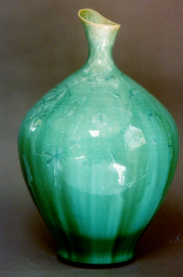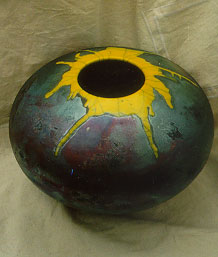Water Pitcher, 1897-1913
English
Ironstone
H 11 D 5 inches
Park Authority Purchase, 1978-21-305-01
Manufactured around 1900, this white ironstone pitcher bears the mark of Alfred Meakin, LTD, a large English pottery company that produced for both domestic and foreign markets. Decorated with a wheat and flowers motif, the pitcher’s shape and design are typical of ironstone ware of the period. Used along with a basin in a bathroom or kitchen, the pitcher likely held water to wash one’s face and hands.
Introduced in England, in the early 1800’s, ironstone was intended to be a mass-produced, porcelain substitute. Hard and durable, ironstone is non-porous and safe for food and drink consumption. Known by several names, ironstone is also referred to as "new stone," "opaque porcelain," "English porcelain," "stone china" and "farmer’s china." Spatterware Plate, circa 1840
























































